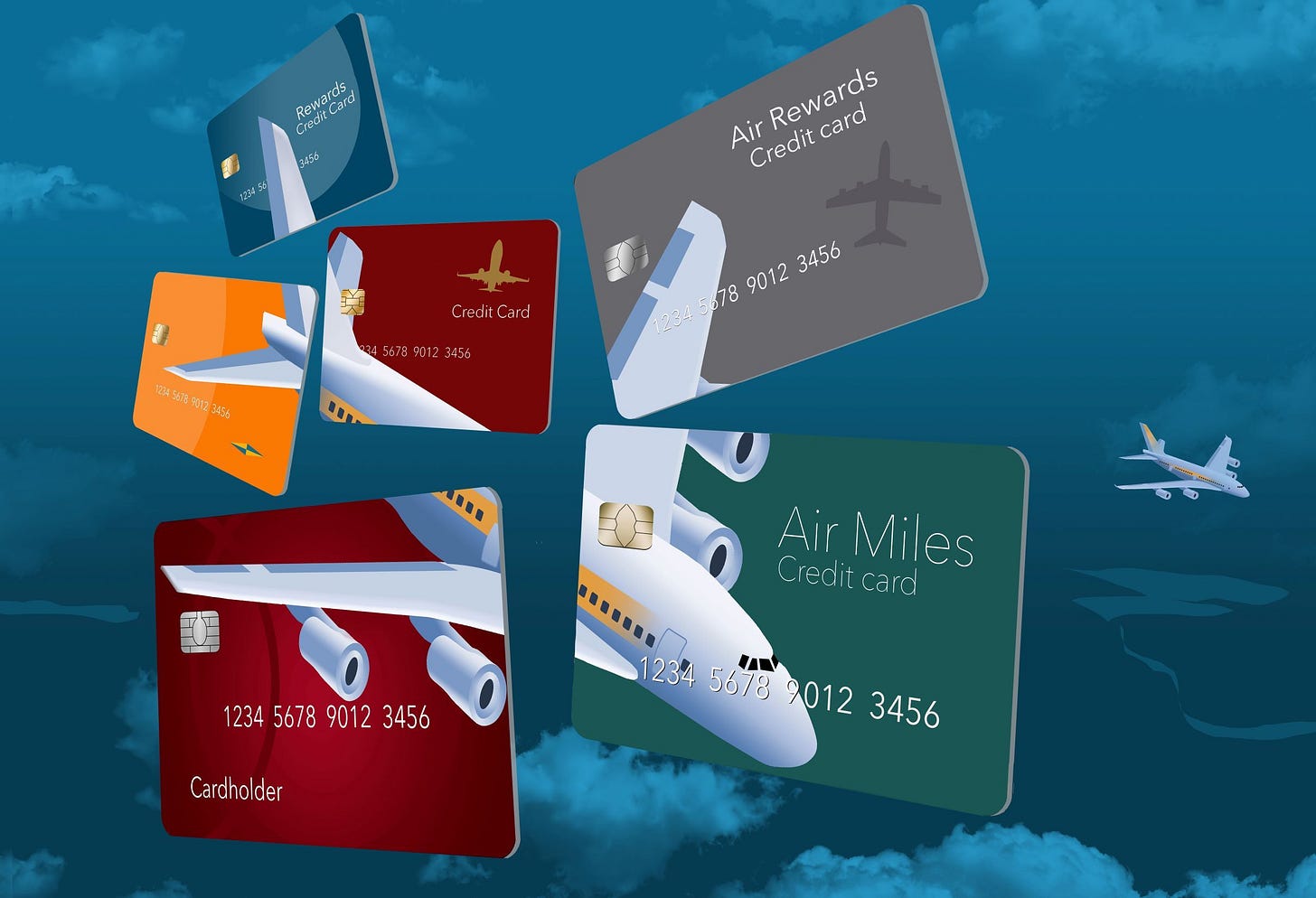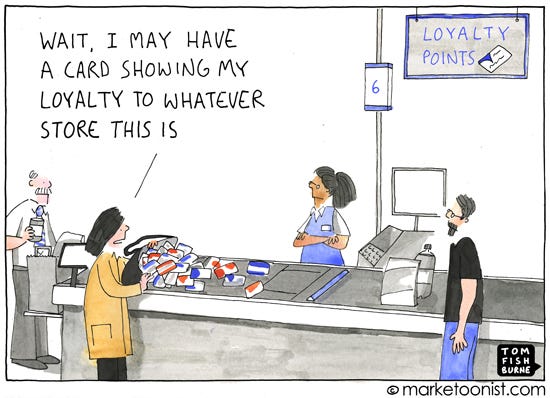On the ground
Frequent-flier programs have been used by airlines to lure in customers ever since Texas International Airlines created the first mileage-based version back in 1979. These programs have provided profitability in good times and a sense of security in bad times. Four US airlines have offered their customer loyalty schemes — American Airlines (AAdvantage), United (MileagePlus), Spirit (Free Spirit), and Delta (SkyMiles) — as collateral to raise large amounts of debt during the pandemic. Besides helping them secure much-needed liquidity, the programs are also saving these airlines from having to resort to tactics like Singapore Airlines’ “flights to nowhere.”

These schemes are valued even higher than the market caps of the airlines in question. For instance, American Airlines with its equity market cap under $7bn has a loyalty program valued between $18bn and $30bn. And there’s a good reason for this. Delta Airlines, with the most valuable program at almost $26bn, can thank SkyMiles for a big chunk of its 2019 revenues ($5.7bn to be precise), and that too with a 42% profit margin. As the Financial Times puts it:
In essence, airlines have two businesses: the first flies people between destinations, and the second peddles those people to banks for a fee.
This characterization of frequent flier programs as a separate business is not as radical as it sounds. Besides being put up as collateral, such a program can be bought like an asset (e.g., Delta buying Pan Am’s program in 1991) and in rare cases, survive as a standalone business (e.g., Jet Airways’ program becoming InterMiles in 2019).
The take-off
Peter Drucker said:
The true purpose of a business is to create and keep customers.
That’s what loyalty programs aim to do across industries but remember - all loyalty programs are not created equal. The simplest form of a loyalty program is to give a discount to a repeat customer as a way of rewarding loyalty. It is believed that organized loyalty programs date back to the 1700s when copper coins given to customers could be exchanged or redeemed on their next purchase.
Over the decades, with increasing competition, the programs have evolved beyond traditional discounts and rewards. Amazon Prime is a good example as it offers privileges instead of rewards, and exploits impulsive behaviour by offering instant gratification (get free and fast shipping now without a minimum amount in the cart) in contrast with the credit card rewards’ promotion of delayed gratification (where you collect and save points to make a redeeming purchase or benefit in the future). An example of the latter is the Starbucks card, (usually) offering 2 stars for every $1 spent, which can later be redeemed for free food or drinks.

Other brands are also focusing on experience to win customer loyalty. Experiential rewards like early access to sales or products. For example, Reebok’s highest loyalty tier members get access to limited-edition products, free fitness certifications, on-demand training, and all-access passes to concerts and events.
The next level after siloed experiential offerings is an integrated loyalty program: across sub-brands, platforms, products, etc. Amazon Prime exemplifies this approach as well. As McKinsey reports:
For $79 a year, for example, members of the online retailer’s “Prime” program get free two-day shipping, plus free digital content. While Prime’s stand-alone profitability is a closely guarded secret, it is estimated that members spend over four times more with Amazon than non-members.
The benefit of creating a value proposition around ‘privilege’ is that customers will be willing to pay for it. For instance, Amazon Prime is not free, neither are the sought-after Amex cards. This is against the norm of giving out reward cards for free. Instead, the firms are giving the customers what they value most (convenience in the case of Amazon).
This evolution is far from complete. The final stage would be an ecosystem focus i.e. strategic alliances between different brands to offer what McKinsey calls coalition loyalty programs:
Ecosystem-centric loyalty may require companies to partner with previous indirect competitors, giving rise to “frenemy” relationships across regions and channels.
Flying high
Since the holy grail of loyalty-program design lies in balancing customer value proposition and business economics, some key considerations are:
Why? Successful loyalty programs are rooted in clear business objectives and success metrics. This is essential for every stage from designing the program to measuring its success.
What? Understand what customers want otherwise you’ll just throw stuff at them and hope they’ll spend more.
Who? It is common to see tiers in loyalty programs to cater to high value customers i.e. those who spend the most.
At what cost? The gap between the cost of offering a benefit to customers and the its perceived value should be maximized.
A useful summary is provided in the following diagram from Bain on the difference between a good and bad loyalty program:

New challenges are emerging for loyalty programs in the digital world. As consumers spend more time online, new B2C brands keep cropping up to fight for their attention as it has become easier than ever to access customers and get them to try new things.
On the flip side, the digital world also makes it easier for firms to understand customers better by leveraging predictive analytics and nudging them towards specific behaviours that are good for business.
Laying Low
Of course, not everyone is on board with this rosy picture we’ve painted of loyalty programs. According to consumer research from Kantar Retail cited in a 2018 HBR article:
71% of consumers now claim that loyalty incentive-programs don’t make them loyal at all. Instead, in this new era of digital-based competition and customer control, people are increasingly buying because of a brand’s relevance to their needs in the moment.

The pitfalls are not hard to understand. As the cartoon shows, a typical grocery store loyalty program is not rewarding loyal behavior - it’s rewarding card ownership. Consumers get discounts on commodities they would buy anyway.
The lesson is to evaluate whether you need a loyalty program in the first place. Such programs are most beneficial for firms in industries with high competition, high margins (non-commodities), and products with repeat purchasability. For instance, until a few months ago, Walmart didn’t even have a loyalty program, believing that its EDLP proposition is enough to keep customers coming back.
Of course, the September 15 debut of Walmart+ found the company jumping on the loyalty bandwagon with a communication focus on “convenience” through one-day delivery, instead of the low prices Walmart is synonymous with. Whether it’s a move that’ll pay off, only time will tell. But in the meantime, consumers can rejoice that Amazon Prime has some competition at last.
This edition of Funnel Vision is written by Ikjot Kaur.
Around the Web in 8 Stories
The opposite of a brand can also be a brand! When the soft drinks market was dominated by Coke and Pepsi, 7UP established itself as ‘The Uncola’. Riding on the anti-establishment waves in the 1960s, the campaign was a breakthrough as it positioned the traditional ‘cola’ brands as the establishment. Marvelous!
What is stakeholder capitalism? Should firms maximise shareholder value or stakeholder value? Interesting question, but is it a binary decision? In 1970, Nobel laureate Milton Friedman argued that The Social Responsibility Of Business Is to Increase Its Profits. Is it still valid?
Spotify announced a partnership with Chernin Entertainment, the production company behind Ford v Ferrari, Hidden Figures, and New Girl, to develop TV and movie pitches based on its exclusive and original podcasts. When Spotify made the move to go deeper into podcasts, analysts and investors weren't impressed. But what they had missed was that Spotify was looking to build an end-to-end content machine — much like Netflix, and to achieve that, reducing dependence on “contracts” and “licences” to supply audio content was key. Podcasts are cheaper to make, and with shows like Homecoming (Gimlet), turning them into movies and shows has been hypothesised to be a potential moneymaker
When SoftBank paid $32bn for Arm in 2016, it was the biggest deal in chipmaking history. That record held until September 13th, when Nvidia announced its intention to buy the Britain-based chip-designer for $40bn. If the deal goes through, Nvidia would have gained a treasure trove of IP and patents that give it unparalleled power in the industry. Is Nvidia looking at vertical integration?
Philip Kotler, the father of modern marketing, talks about consumers in the age of coronavirus and how capitalism needs to change
Epic Games, Spotify, and Match Group (owner of Tinder) have forged an alliance to pressure Apple to change its marketplace (App Store) policies that these developers believe are no longer sustainable and harm competition. Called Coalition for App Fairness, this nonprofit was registered after ‘Fortnite’ was kicked off app stores with an agenda to get commissions reduced. Does Apple really care?
Should you focus on building your MVP first or network with potential investors? If your heads are down, you should probably look up and focus on building a relationship with your investors, believes Sequoia
Here’s an article that combines all your favourite technologies and lists 5 things that companies must do to reinvent their marketing business models in the post-pandemic era. Add “SSTT” to your bag of tech-jargons
That’s it for this week. Find us on LinkedIn, Instagram, and Twitter. If you like what you read, do share it with your friends!
Ciao!


